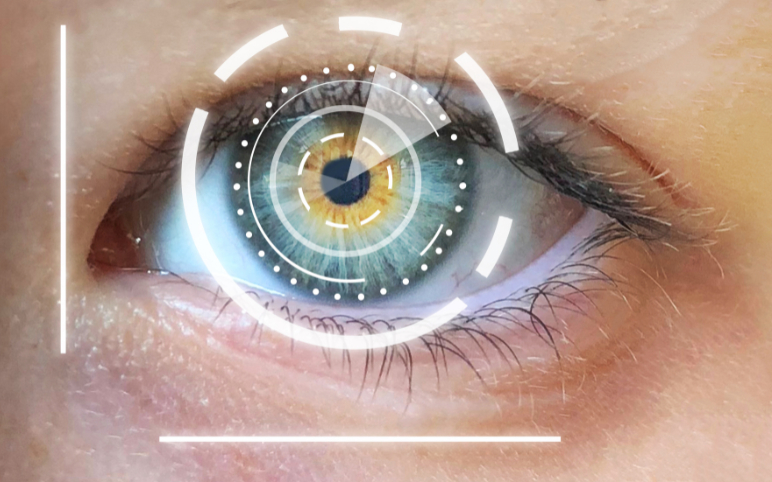How is Vision Care Market Growing With the Ongoing Innovation in the Product Development?
Oct 05, 2022
Table of Contents
The eyes are one of the most vital and critical body parts that provide aids in the processing of visual details. Being a very sensitive and delicate part, they require special care. Eyes defects can affect everyday activities and severely impact individuals and their families social and economic well-being. As per WHO, “vision impairment poses an enormous global financial burden, with the annual global costs of productivity losses associated with vision impairment from uncorrected myopia and presbyopia alone estimated to be US$ 244 billion and US$ 25.4 billion. Despite several efforts by healthcare agencies and organizations, the eyes related disease cases are rising at an immense pace globally across geographies and age groups.
Cataracts, glaucoma, conjunctivitis, and retinal detachment are some of the vision-related ailments and defects for which there has been a significant increase in the number of cases. As per the WHO, at least 2.2 billion people worldwide have near or distant vision impairment. Of all these cases, nearly 1 billion or almost half of these cases of vision impairment could have been prevented or has yet to be addressed. People across all age groups can have vision loss. However, it is observed that vision impairment and blindness are common over the age of 50 years.
With the aging global population, the demand for eye health care services is growing significantly. Besides age, sedentary lifestyles, allergies, and rising pollution levels also lead to the growth of eye disorders. Over the past few years, there have been significant developments in the field of eye vision prevention, management, and control. The segment is observing significant clinical and commercial advancement in terms of product development, approvals, and launch. The Vision Care Market focuses on the preservation of ocular health and correction of eye problems with products, and in some cases, surgery may also be done to rectify the vision care. The vision care market consists of products such as eyeglasses, lenses, frames, artificial tear drops, ointments or emollients, eye washes, pills, eyelids, scrubs, decongestants, and antihistamines. Globally, several key players are actively working in the Vision Care Market to fulfill various demands.
Vision Care Market Segmentation
Today, several types of options are available in the market to treat eye disorders. The major types of Vision care products in the market are eyeglasses, contact lenses, intraocular lenses, and more. Among the several types of products, eyeglasses occupy the major market share.
Eyewear
Eyewear includes items and accessories worn over or on the eyes for various reasons such as environmental protection, fashion, or to improve visual impairment. Spectacles, sunglasses, and contact lenses are all part of the eyewear market. The spectacles’ category is divided further into eyewear glasses and eyewear frames.
Humans have used eyewear to protect and enhance vision for the past 1,000 years, with some of the earliest forms being the snow goggles worn by the Inuit and Yupik peoples of the Arctic. Eyewear technology has advanced significantly since the use of hand-held magnifying lenses by Italian artists and scholars in the 13th century to the invention of bifocal lenses by American statesman and inventor Benjamin Franklin in 1784.
The eyewear market is currently experiencing profitable growth as a result of various factors, such as the increasing number of vision impairment cases among the global population. Furthermore, the growing burden of the aging population is expected to drive up demand for eyewear in the coming years. This is because the cataract is the most common vision impairment among the elderly population, and healthcare professionals recommend anti-glare sunglasses, new eyeglasses, and contact lenses as early management options.

Moreover, the active participation of the key players in the market will also drive the eyewear market growth in the coming years. Some of the key market players operating in the eyewear market include Alcon, Inc., Johnson & Johnson, Inc., EssilorLuxottica, CooperVision (CooperCompanies), Bausch Health Companies Inc., SAFILO GROUP S.P.A., ZEISS International, Fielmann AG, JINS Eyewear US, Inc., LENSMAM CO., LTD., VIEWELL.INC, POLYTOUCH, SEED Co., Ltd., Menicon Co., Ltd., OPTEX AUSTRALIA, Sunshades Eyewear, HOYA Corporation, American Sunglass Manufacturing (AmSun Manufacturing Inc.), Charlie V, Eyeking, SightGlass Vision, Inc., and others.
As per DelveInsight analysis, the global eyewear market size was valued at USD 132.21 billion in 2021, growing at a CAGR of 6.33 % during the forecast period from 2022 to 2027, to reach USD 189.97 billion by 2027.
However, the presence of counterfeit products, as well as limitations associated with some eyewear products, are some of the factors that are likely to impede the growth of the eyewear market.
Additionally, the unprecedented COVID-19 pandemic slowed the eyewear market due to the implementation of nationwide lockdowns and the temporary closure of various ophthalmic clinics and retail shops for an extended period of time during the pandemic’s initial phase.
However, due to the reopening of clinics and retail shops, as well as the launch of various vaccines and mass vaccination drives worldwide, the eyewear market is expected to return to normalcy in the post-pandemic situation, which will ultimately increase demand.
Intraocular Lenses (IOLS)
An intraocular lens implant is a synthetic, artificial lens that is implanted inside the eye to replace the focusing power of a natural lens that has been surgically removed, most commonly as part of cataract surgery. Most Intraocular Lenses (IOLs) are made of silicone, acrylic, or other plastic materials and are coated with a special material to help protect the eyes from the sun’s harmful ultraviolet (UV) rays, such as silicone oil Intraocular Lens. The FDA has approved intraocular lenses for implantation in people over the age of eighteen, and they are used off-label in children under the age of eighteen.
The intraocular lens market is witnessing an increased product demand for a variety of reasons, one of which is the rising prevalence of ocular diseases. The rising prevalence of eye diseases such as refractive error, age-related macular degeneration, cataracts, diabetic retinopathy, and glaucoma is a major driving force in the intraocular lens market.
Technological advancements in the development of IOLs are another factor that may be responsible for the growth of the intraocular lens market. The rising prevalence of eye disease has increased demand for IOLs, allowing intraocular lens companies to invest more in technological advancements.

The leading MedTech giants such as Johnson & Johnson, HOYA GROUP, Alcon Inc, Carl Zeiss Meditec AG, Bausch & Lomb, Rayner Intraocular Lenses Limited, Eyekon Medical Inc, Lenstec, Inc, HumanOptics AG, STAAR Surgical Company, Aurolab, PhyIOL S.A., Care Group, Tekia Inc, Omni Lens Pvt Ltd, MORCHER® GmbH, Ophtec BV, SIFI S.p.A., Excellent Hi-Care Pvt. Ltd., Hanita Lenses and others are currently operating in the intraocular lenses market.
According to the latest “Intraocular Lens Market” report published by DelveInsight, the global Intraocular Lens market size was USD 3.85 billion in 2021, and will grow at a CAGR of 4.89% during the forecast period from 2022 to 2027 to reach USD 5.13 million by 2027.
However, limitations associated with intraocular lens post-operative complications and a lack of premium lens coverage may prove to be challenging factors for intraocular lens market growth.
Additionally, due to the COVID-19 pandemic, the intraocular lens market experienced slow growth. The worldwide lockdown to combat the spread of the COVID-19 infection resulted in the suspension of various surgeries and outpatient consultations across virtually all medical specialties, including ophthalmology. Elective procedures were postponed because the number of new COVID-19 cases had peaked, many clinics were closed, and cataract surgeries were down by roughly half compared to previous years, resulting in low demand for IOLs. However, the approval of various COVID-19 vaccines and efforts toward mass vaccination has paved the way for revenue generation in the IOLs market to recover, presenting a positive growth outlook in the coming years.
Contact Lens Solutions
Contact lens solution can be used to clean, disinfect, and store contacts. Aside from the widely used multipurpose and hydrogen peroxide-based solution, other liquids such as saline, daily cleaners, and enzymatic protein removers, among others, are used for specific applications such as cleaning and disinfecting. To keep the lenses and eyes lubricated, contact lens solution is essential. They are used to clean, disinfect, and store contact lenses, as well as to prevent eye infections. Because of the growing demand for a more comfortable alternative to eyeglasses, the use of contact lenses has skyrocketed. In turn, this is expected to drive product demand in the near future.
Moreover, some eye infections can result in the development of acanthamoeba keratitis. This can result in partial or complete vision loss. Failure to adhere to replacement schedules, as well as a lack of proper eye care, can result in conditions such as Contact Lens-induced Acute Red Eye (CLARE). Compliance with the lens care regimen, as well as the use of lens care solutions, is critical for contact lens wearers.
Various solutions are used to clean and disinfect contact lenses before wearing them. A lack of lubrication can cause dry eyes, which cause eye irritation. With the increasing innovation and development of new contact lens materials, there is a greater need for solutions that can lubricate and disinfect such products. These factors are expected to drive the market at a significant CAGR in the coming years.

Furthermore, several major MedTech companies are concentrating on the development of new contact lens solutions and coatings. Alcon Laboratories, Inc., Bausch + Lomb, Incorporated, Allergan, Ciba Vision, CLB VISION, CooperVision, Inc., FreshKon, INTEROJO Co. Ltd., Johnson & Johnson Vision Care, Inc., Menicon Co., Ltd., and others are among the leading players in the contact lens solutions market.
Recent Developments in the Vision Care Market
- In April 2022, Alcon, the global leader in eye care, announced the launch of PRECISION1® for Astigmatism in Canada. The daily disposable silicone hydrogel (SiHy) contact lenses are designed for astigmatic patients, continuing Alcon’s mission to help people see brilliantly.
- In December 2021, Johnson & Johnson Vision received FDA approval for its ACUVUE Abiliti Overnight Therapeutic Lenses, the first and only FDA-approved orthokeratology (ortho-k) contact lens for myopia management, according to the company.
- On November 19, 2021, Johnson & Johnson Vision received FDA Approval of ACUVUE® Abiliti™ Overnight Therapeutic Lenses for Myopia Management.
- In September 21, 2021, ZEISS Medical Technology introduced industry-first, integrated solutions that bring further value to the ZEISS Medical Ecosystem at ZEISS Innovation Week. The newly introduced ZEISS CT LUCIA 621* monofocal IOL features the patented ZEISS Optic (ZO) Asphericity Concept with its uniquely forgiving design to deliver excellent visual outcomes for a broad range of patients and surgical situations.
- On May 17, 2021, Essilor receives the FDA “breakthrough device” designation for ESSILOR STELLEST™, its new generation of spectacle lens solutions in the fight against myopia.
- In February 2021, Johnson & Johnson Vision received the CE Mark for its latest multifocal contact lens, ACUVUE OASYS MULTIFOCAL, with PUPIL OPTIMIZED DESIGN for Europe.
- In February 2021, Johnson & Johnson Vision received FDA approval for next-generation monofocal intraocular lens – Tecnis Eyhance™ and Tecnis Eyhance™ Toric Ii IOLS, for the treatment of cataract patients.
- On January 07, 2021, Alcon Inc commercially launched the first and only non-diffractive extended depth of focus intraocular lens (IOL) in the US – the AcrySof® IQ VivityTM IOL (Vivity).
Vision Care Market Dynamics
As per DelveInsight, the Vision Care Market is expected to grow in the coming years owing to the rise in the incidence of ocular diseases, growing awareness about eye care, and the boost in the adoption of vision care products such as spectacles, and colored contact lenses, among others.
Globally, about 51% of the world’s blindness is caused due to cataracts, and the geriatric population is more prone to cataracts. As per DelveInsight, the prevalence of cataract cases is expected to rise as the geriatric population grows. The growing incidence of vision loss is expected to stimulate the Vision Care Market in the coming years. Moreover, technological advancement, growth in the research and development (R&D) activity in product development, and increasing affordability of eye care products will also significantly strengthen the market growth.
Future Perspective
Vision Care Market is one of the most competitive segments in the healthcare industry. Globally, several key companies are actively working in the domain and are involved in the development of new and innovative products. The new gene-editing solution like CRISPR-Cas9 or CRISPR also indicates great potential for better treatment and health outcomes. Similarly, the growth in product development like 3D printed contact lenses, artificial intelligence to detect eye conditions, bionic eyes, and artificial retinas also raise high hope for better eye care management. As the industry is thriving with technological innovation, the Vision Care Market is expected to register immense growth in the coming years and is expected to overcome the existing challenges and needs in the product demand.



